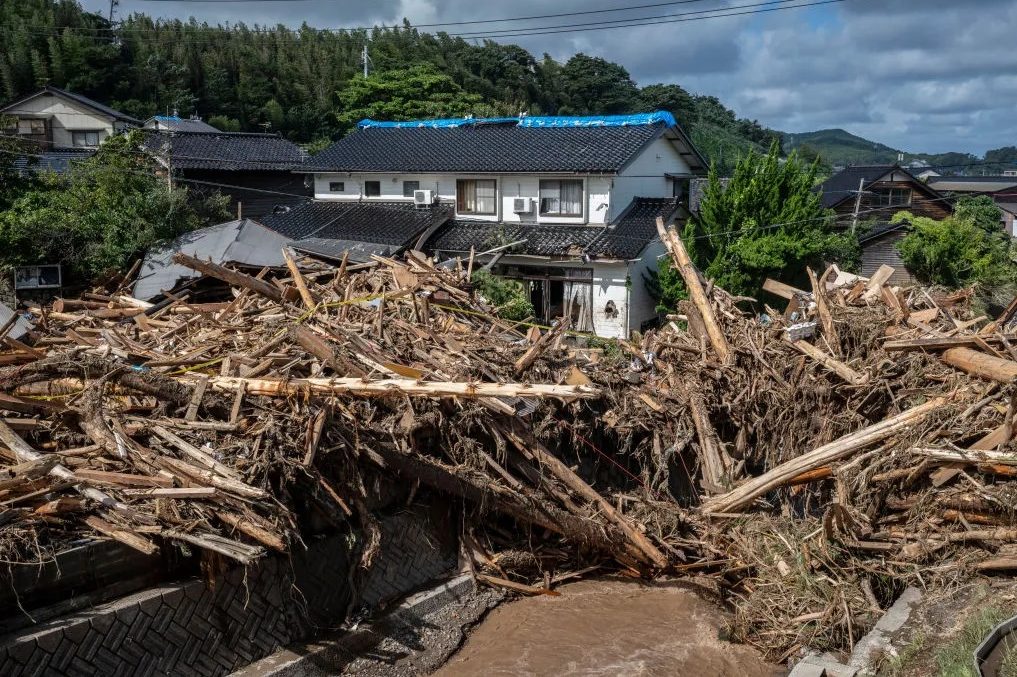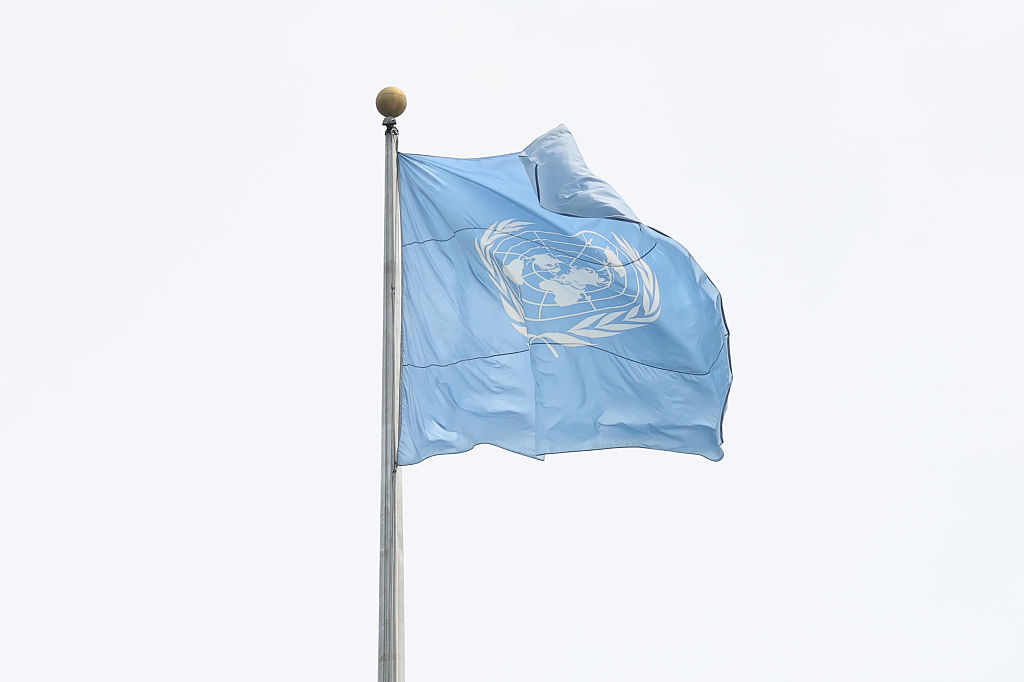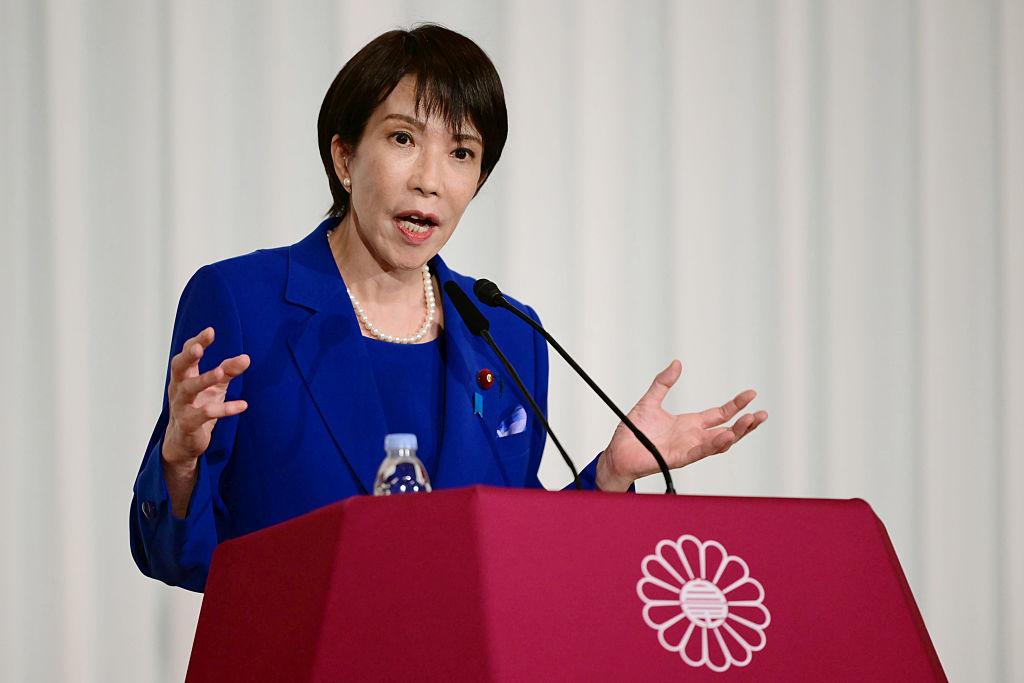Yet another natural disaster has struck in Japan as floods and landslides in the Noto peninsula, precipitated by “unprecedented” rainfall, have killed seven (according to the state broadcaster NHK) with ten people missing. As usual, these numbers are expected to rise.
The Ishikawa area was pounded on Saturday with the heaviest continuous rainfall (around twenty-one inches in seventy-two hours in the city of Wajima) since records began. One resident Akemi Yamashita described scenes as “heart-breaking” with the floods, which she saw rising quickly to half the height of her car as she drove through town, like “something from a movie.”
This latest tragedy is a reminder of how treacherous, climatically and topographically Japan is
More than 100 communities have been cut off entirely as nearly two dozen rivers burst their banks and 4,000 households were without power on Monday, according to the Hokuriku Electric Power Company. Tens of thousands have been urged to evacuate by the authorities after the weather agency issued emergency warnings. Military personnel have been sent to the region to assist rescue workers.
What makes this latest emergency especially poignant is that the affected area is still recovering from the category 7.5 earthquake that hit on New Year’s day and led to 318 deaths and destroyed nearly 50,000 homes. To make things even more dismal, the landslides and flooding seem to have hampered the ongoing recovery efforts from that earthquake and rendered some of the temporary housing erected in its wake uninhabitable. Some especially unfortunate people have been made homeless twice in less than a year.
It may be too early to draw any firm wider conclusions from this latest natural disaster — though the climate change lobby have got in early to claim the greater than normal rainfall is due to higher temperatures (warmer air holds more moisture apparently). One potential theme that is emerging, however, is that the government may have misjudged the siting of the temporary housing.
It is being suggested that in an understandable rush to rehouse the homeless, and perhaps not anticipating the possibility of a second natural disaster in the region, the government may have placed the temporary dwellings in risky areas. It is being reported that eight of the makeshift housing complexes in Wajima and Suzu where victims of the January 1 quake were residing, have had to be abandoned.
If the theory of government culpability, or partial culpability, gains traction, it may lead to references to other misjudgments, such as the siting of a solar panel facility at the top of a hill above the resort town of Atami. Earth cleared for the facility was allowed to pile up dangerously and surged through the town in 2021 destroying buildings after heavy rains. Then there was the siting of the Fukushima nuclear power plant near the coast in the pathway of a potential tsunami — which duly arrived in March 2011.
In fairness, the government may have had little choice in Noto, as the hilly region has limited “safe” areas available, and the situation for the 14,000 affected by the earthquake was critical (many were elderly, some were ill). And dealing with the massive clean up and reconstruction required after a major quake is a Herculean task.
More generally this latest tragedy serves as a reminder of how treacherous, climatically and topographically Japan is. With extreme temperature changes, an abundance of areas vulnerable to landslides and flooding and an estimated 1,500 earthquakes a year, disaster can occur almost anywhere, at any time. Compounding these problems is a culture of impermanence: housing in Japan tends to be flimsy. Why build to last if the elements can claim a building in seconds?
Outgoing prime minister Fumio Kishida — he’s in in his very last few days — who was criticized for his reaction to the New Year’s quake, has been quick to issue a statement this time. He called for emergency workers to do their best and prioritize saving the lives of residents. It will be just about his last duty.
His successor, whose identity will be known shortly, can forget about easing themselves into the job. They will have to deal with the current crisis, and, probably, with calls for a nationwide plan to better prepare for such calamities in the future. It’s an unenviable task.
This article was originally published on The Spectator’s UK website.

























